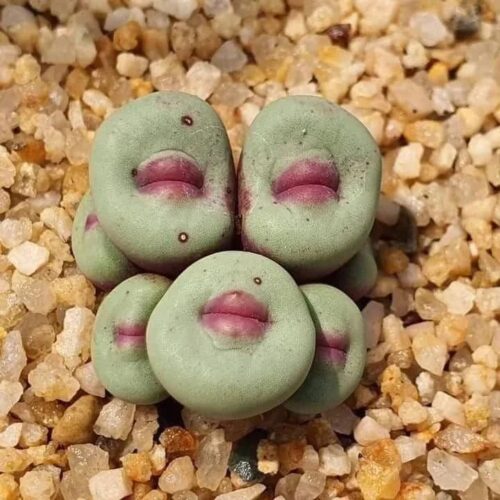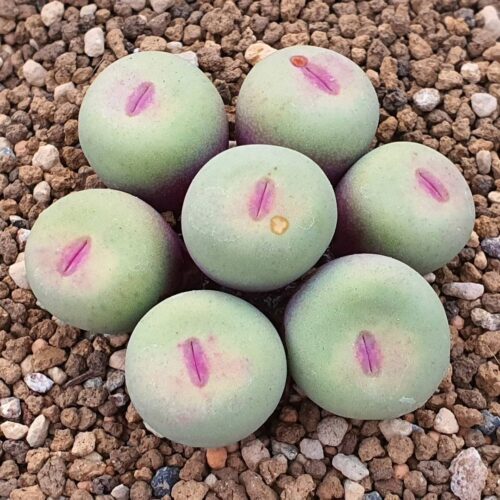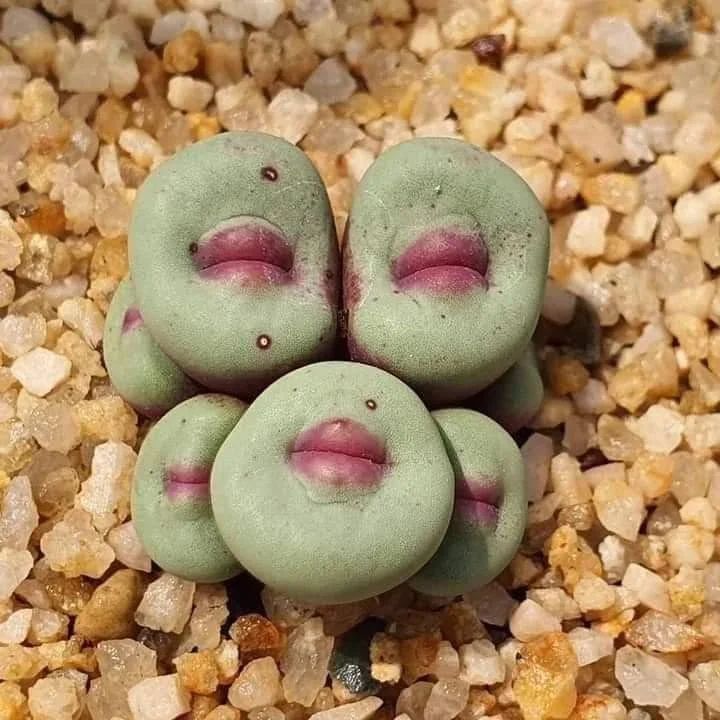Conophytum Pageae can be a beautiful addition to your indoor or outdoor garden. Check everything in this guide for growing this succulent.
Conophytum Pageae is a stunning succulent that can be planted in your home easily; read useful tips below.
Common Names: Cone Plant, Lips Plant, Button Plant, Living Pebbles, and Dumplings
Botanical Name: Conophytum Pageae
USDA Zones: 10b-11b
Read: Jade Plant Indoor Care
Conophytum Pageae Profile

Native to Northern Cape and Western Cape, South Africa, and Southern Namibia. This small succulent appears in clusters of several bodies, creating a small mound. The succulents are conversely conical and made up of completely fused leaves in opaque-green to pale-yellow-green hue, with some spots and wrinkles.
The crack between the leaves is encircled by red and occasionally lifted like a doughnut. During fall, scented, ornamental yellow, white, or pink blooms appear at night.
Interesting Fact: The name ‘Pageae’ is used to honor Mary Maud Page (1867-1925); she was an English plant collector, botanical illustrator, and botanical explorer. She moved to South Africa.
Read: String of Stars Plant Care
How to Propagate Conophytum pageae
You can propagate Conophytum pageae through division and seeds in late summer or early fall after flowering or before it comes out from dormancy.
From Seeds
To grow this plant from seeds, fill a pot with well-draining soil and sow the seeds into it. Cover the seeds with a thin layer of sand. Keep the container in a sunny area. Maintain the soil moisture till seeds germinate. The ideal temperature for seed germination has to be between 65-70 F. Seed will germinate in 1 to 2 weeks. Slowly reduce the watering when seedlings grow.
From Division
- Start dividing the plant in late summer or early fall after flowering.
- Divide mature plants into clusters of 2-4 rooted pairs of foliage.
- Take out the plant from the pot and gently cut it with the roots.
- Plant each cluster into separate pots.
Read: Kalanchoe Millotii Care
Ideal Growing Conditions for Conophytum pageae

Light
This succulent performs well in bright light but dislikes excessive direct sunlight. In a cool climate, a few hours of full can be good for your plant. In lack of light, the plant stretches itself towards the light.
Soil
Use porous soil that drains fast for growing this plant. You can purchase a commercial potting mix made for succulents and cacti.
Water
Reduce watering in dormancy. You can begin to water deeply in the fall when plants start to grow actively. Just allow the soil to dry between watering. If leaves are wilting, it’s a sign that plants need watering.
Temperature
Conophytum can handle high temperatures but does not allow the temperature to go below freezing. This succulent can tolerate temperatures low up to 35 to 50 F.
Read: Sedum Nussbaumerianum Care
Conophytum pageae Care

Fertilizer
This plant is not a heavy feeder, and you don’t need to feed it if the plant is repotted every two years.
Repotting
Repot the plant at the start of the period when a plant grows actively. However, you can repot at any time of the year when the plant is growing actively.
Pests and Diseases
Snails, mealybugs, caterpillars, and slugs can infect the plant; treat these pests using insecticidal soap. It will be great to discard old sheaths and dead flowers when new leaves break down; it will control botrytis.
Toxicity
Conophytum pageae is not toxic for pets and kids. If ingested, it can cause skin and mouth irritation.
Read: Graptopetalum Paraguayense Growing and Care Guide
Conophytum Pageae Uses
Grow this plant on a rock, window, or ornamental garden, and ensure the area stays dry. This succulent is perfect for the spots where they gradually spread.



